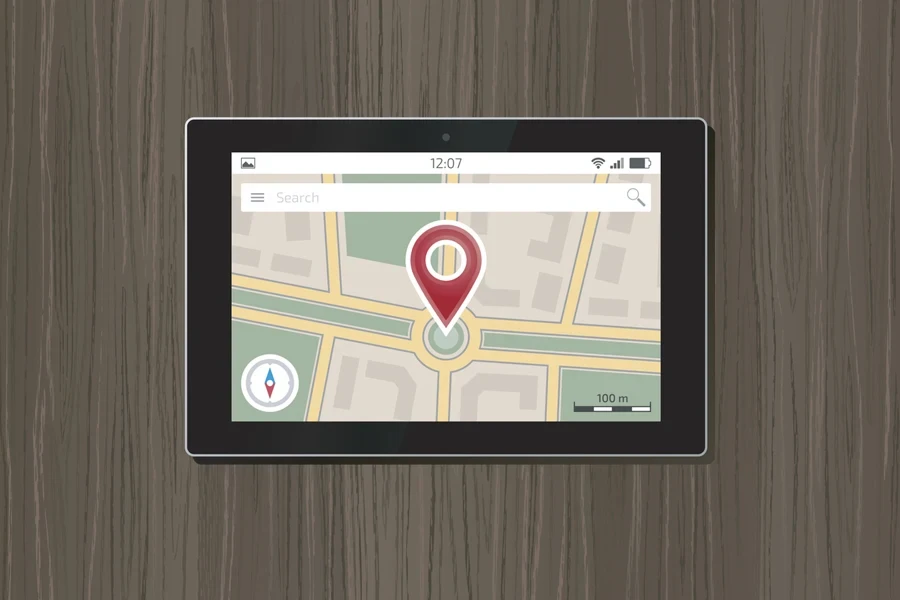As a business owner, there is a need to ensure that you are connecting with the most relevant audiences and improving your ROAS (return on ad spend). Fortunately, this is possible with geotargeting, a location-based targeting strategy 95% of global companies use to capture consumer attention and engagement.
You may be wondering what geotargeting is and how it works. In this article, we will examine this marketing concept in more detail, discussing its benefits and the steps to geotarget to grow your business. Read on to learn more.
Table of Contents
Geotargeting explained
How does geotargeting work?
Types of geotargeting
What are the benefits of geotargeting?
How to geotarget
Conclusion
Geotargeting explained
Geotargeting is a method of creating advertisements or content about your business, product, or service using location-based information so that the right customers can see the ads specific to their exact location.
In this tactic, a user’s location information is collected using GPS signals, IP addresses, or cellular data, making your campaigns more effective in driving revenue and reaching your most important prospects.
How does geotargeting work?

As discussed earlier, geotargeting is a type of advertising that uses data from a user’s device, such as their GPS, IP address, device ID, WiFi, Bluetooth, and more, to identify their actual location. The location data then determines the type of ads or content to be shown to the prospective customer.
Many ad platforms allow you to show location-based ads to users. For instance, Google Ads geotargeting lets you specify an area on Google Maps or a geographical radius on which you would like your ads served to people, such as near your retail store. Other social media platforms to use for geotargeting include Facebook, Twitter, and Instagram.
A good example of geotargeted advertising is a coffee shop in New York City that shows ads within a 5-mile radius of its business location. When a customer uses their mobile phone to search for “coffee shop near me,” an advertisement for this coffee shop appears with an incentive to entice the local user to visit its store.
Is geotargeting the same as geofencing?

Geotargeting and geofencing are digital marketing techniques that leverage location data from potential audiences. However, there is a difference between the two.
With geotargeting, you show ads to customers based on their location—it could be where they live or work—so that the ads find them where they are. Geotargeting also enables you to make personalized ads based on user interests, behavior, or demographics.
On the other hand, geofencing focuses solely on a large audience in a discrete geographic location. In geofencing, you create a virtual “fence” so that consumers within or crossing that barrier can come to you. Local businesses often use geofencing to market the products or services they offer to a large mass of people.
Types of geotargeting
Geotargeting is important for both small businesses that want to expand their businesses as well as large businesses that want to fine-tune their advertising strategy. If you want to leverage this technique, you can use geotargeting in several ways, as detailed below:
1. ZIP code or postal code geotargeting

As an entrepreneur, you may want to connect with consumers in a smaller and more specific segment of an area. This can be achieved with ZIP code geotargeting, whereby you select one or several ZIP, postal, or country codes and tailor your content to fit users in those areas.
2. Regional or city geotargeting
Regional geotargeting enables businesses to advertise to users within a specific region or city. This type of personalized marketing works if your business operates in multiple regions or cities, allowing for localized promotions and information.
3. Radius targeting (proximity geotargeting)
In this type of geotargeting, advertisers deliver ads or content to users within the radius of a specific geographic location. Think of it as a blend between regional and ZIP code geotargeting.
You can choose a radius within a particular region and target customers there. This can include customers from multiple zip codes or clients from several fragments of one city.
4. GPS-based geotargeting

Nowadays, marketers can use GPS data from mobile devices to show target consumers ads or content based on exactly where they are. The good thing is that GPS data is super accurate, making it perfect for real-time location-based marketing to people who are always on the move.
What are the benefits of geotargeting?
Geotargeting has a lot of advantages for your business. They include the following:
1. Creating personalized experiences
For your ads to work, you must ensure that you cater to your target audience. Your customers want to know that you are concerned about their wants and needs, and geotargeting allows you to create highly personalized content for them.
This results in better user experiences, which foster great and long-lasting relationships with your customers.
2. Boost sales
Formulating personalized ad messages based on a user’s location contributes to better customer experiences, which in turn leads to higher sales.
According to one survey, advanced personalization, which is possible through geotargeting, has resulted in a 200% ROI for 70% of marketers. In another survey, nine out of ten marketers agreed that location-based advertising was the reason behind their increased sales.
3. Reach more customers

One of the advertisers’ most common goals is to reach a broader market and attract more customers. Thankfully, geotargeting can help achieve this.
Geographic targeting is an easy way to reach more customers because you can formulate experiences for audiences depending on their demographic data, such as age, gender, and place of residence. You can even personalize your content to fit different cultures, events, and seasonal products.
4. Increased engagement
Ads relevant to consumers and their locations are more likely to capture their attention, increasing the chances of interaction. You will reach potential customers who are highly likely to convert, as they will see ads that resonate with them.
In other words, geotargeting ads are capable of generating higher engagement rates than other marketing campaign methods.
5. Enhanced relevance
No user wants to see a product or service not provided in their city or region, and that’s where geotargeting comes in. With geotargeting, you can place ads in front of people who live in your area, ensuring that you create ad campaigns that appeal to them and address their needs.
How to geotarget
Now that you know what geotargeting is and how it benefits your business, you may be wondering about the steps for implementing this digital marketing strategy. The good news is that geotargeting is a straightforward procedure.
Most platforms have built-in geotargeting tools, so getting started should not be a problem. To get started with geo-targeting, follow these 3 steps:
1. Determine where you want to geotarget

The main goal of geotargeting is to target specific location groups. However, for it to be a success, the first thing to do is to figure out the location where you intend to find customers to support your business. If your business serves customers in several locations, you will need to create ads that are relevant to that specific area.
After determining the target location to focus on, conduct research that helps you determine what ads you will formulate. This ensures that you are creating relevant content that resonates with the people within that proximity, city, or state, which increases brand awareness and leads to higher conversion rates.
2. Use the tools built into the social media platforms
Major PPC platforms have built-in tools that enable businesses to display their ads to people in different locations. Mobile apps like Facebook, Twitter, and Instagram all have geotargeting elements.
Google is the most popular ad platform, with a 39% market share. Google Ads location targeting enables you to create ad content for different geographical places, such as areas within a country, a radius around a city, or location groups with various interests and demographics.
3. Create the ads
Once you have the location you want to geotarget and the tools you will use to do so, it’s time to create the ads.
When creating the ads, make sure they are personalized and relevant to appeal to the specific group you intend to target. Don’t limit yourself to one platform; use several social media platforms to multiply your impressions and, ultimately, your conversions.
Conclusion
Incorporating geotargeting into your marketing mix is necessary if you want to optimize your customer reach and increase revenue for your business. Geotargeting helps you personalize experiences for your customers, and when buyers find relevant content, it ignites engagement, a recipe for conversion. Therefore, start leveraging this location-based marketing strategy, and your bottom line will thank you.




